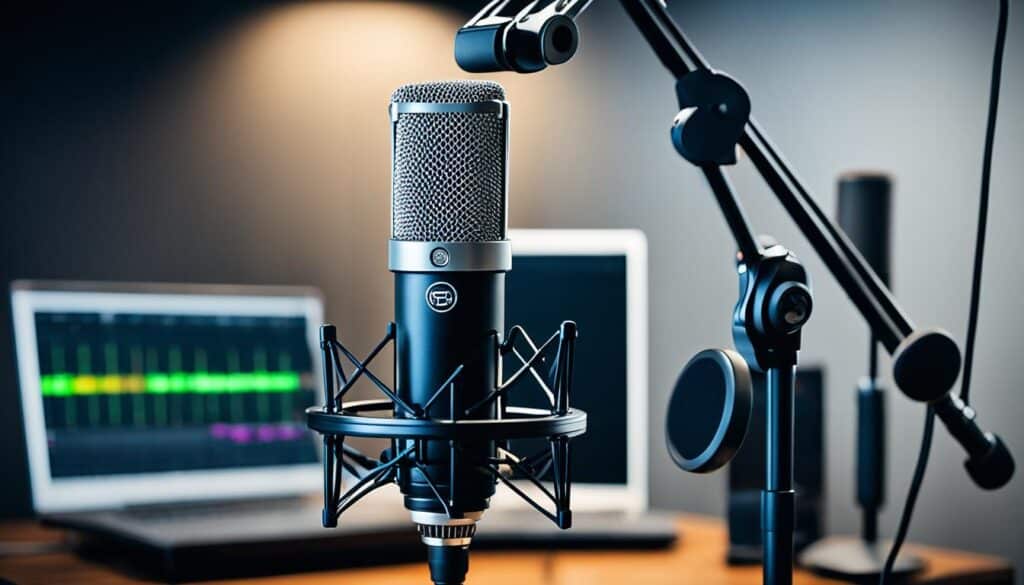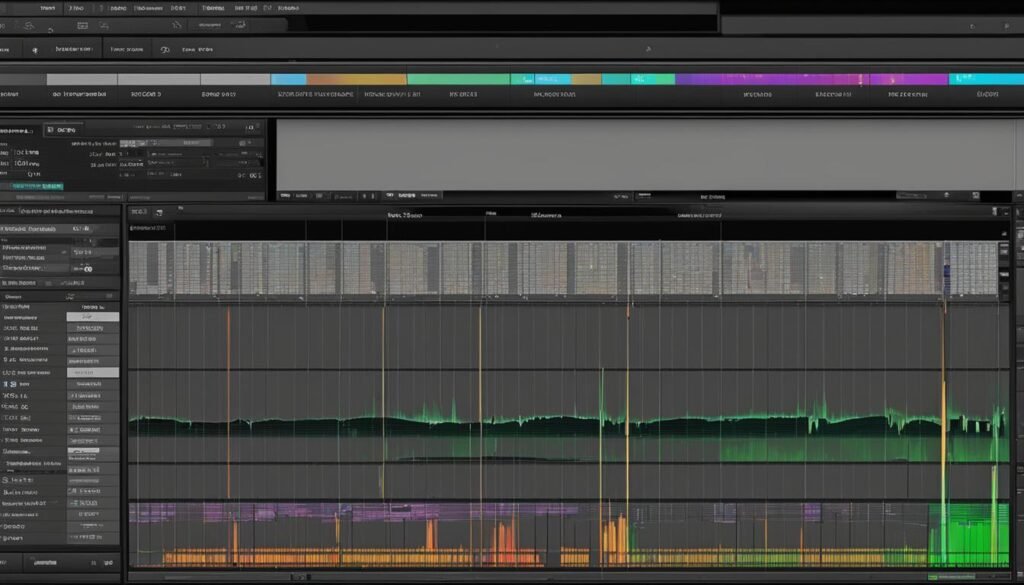Embark On Your Audio Journey: A Comprehensive Guide To Starting A Podcast
In the ever-expansive Starting A Podcast realm of digital media, podcasting has emerged as a potent platform for sharing narratives, ideas, and knowledge. Initiating a podcast provides a unique avenue to connect with a global audience and amplify your voice. This blog will navigate the exciting journey of starting your own podcast, from conceptualization to the inaugural episode and beyond.
Key Takeaways
- Choosing a podcast niche and defining your mission are crucial for targeting the right audience.
- A captivating concept is essential to engage listeners and differentiate your podcast.
- Plan your episodes and create a content calendar to maintain consistency.
- Invest in quality recording equipment to ensure clear and crisp audio.
- Create an attractive name and visually appealing branding to attract potential listeners.
Clarify Your Niche and Mission
Before pressing record, it is essential to clarify the niche and mission of your podcast. Clearly defining these aspects will guide your content creation and help you resonate with your target audience.
- Pick a Podcast Niche: Identify the specific topic or theme that aligns with your interests, expertise, and passion. Choose a niche that sets your podcast apart in the vast podcasting landscape.
- Understand Your Podcast Mission: Determine the purpose or mission of your podcast. What do you want to achieve? Educate, entertain, inspire, or inform? Defining your mission sets the tone and direction for your podcast episodes.
- Identify Your Target Audience: Who is your ideal listener? Understanding your target audience’s demographics, interests, and preferences will help tailor your content to their needs and establish a connection.
Your podcast’s niche should align with your passion and expertise, while its mission should clearly communicate the value you aim to provide to your target audience. This clarity will guide your content creation strategy and help you establish a dedicated listenership.
Develop a Captivating Concept
A successful podcast is built on a captivating concept that engages and intrigues your target audience. Whether you choose storytelling, interviews, educational content, or a combination of these approaches, it’s essential to ensure that your concept resonates with the interests and preferences of your listeners.
When brainstorming your podcast concept, consider the following:
- Identify your target audience: Understanding your target audience is crucial for developing content that speaks directly to their interests and needs. Consider their demographics, preferences, and the unique value you can offer.
- Highlight your expertise: Leverage your expertise and passion to create a podcast that showcases your unique insights and knowledge. Your enthusiasm and expertise on the topic will shine through and captivate your listeners.
- Uncover storytelling opportunities: Incorporate storytelling elements into your podcast concept. Humans have an innate affinity for stories, and weaving narratives throughout your episodes can make your content more engaging and relatable.
- Research your competition: Study existing podcasts in your niche to identify gaps or areas where you can provide a fresh perspective. This research will help you refine your concept and make it stand out from the crowd.
By developing a captivating concept that speaks to your target audience’s interests, you can create an engaging podcast that keeps listeners coming back for more.

Embrace the power of captivating concepts in your podcast to connect with and entertain your target audience and leave a lasting impression.
Strategize Your Episodes
Once you have a captivating concept in place, it’s time to strategize your podcast episodes by sketching out your initial ideas and establishing a content calendar. This crucial planning stage fosters consistency and ensures a seamless flow of content for your listeners.
Create a content calendar that outlines your episode topics and release dates. This calendar will serve as your roadmap, guiding you through the production process and helping you stay organized. Consider factors such as the frequency of your episode releases and the duration of each episode. Align these decisions with your target audience’s preferences and your own production capabilities.
When strategizing your episodes, also think about the format and structure that will best suit your content. Will you engage in solo discussions, interviews with experts, or a panel-style conversation? The format you choose should align with your podcast’s mission and cater to the preferences of your target audience.
Additionally, consider potential guests who can contribute unique insights, experiences, or perspectives to your podcast. Collaborating with experts, industry leaders, or influential figures can bring value and diversity to your episodes, attracting and retaining a larger audience.
Sample Content Calendar
| Episode Number | Episode Title | Guest | Release Date |
|---|---|---|---|
| 1 | The Power of Storytelling | John Smith | March 15, 2022 |
| 2 | Interview with Industry Expert | Jane Doe | March 22, 2022 |
| 3 | Deep Dive into Sustainable Living | Dr. Emma Green | March 29, 2022 |
| 4 | Q&A Session: Listener Questions | N/A | April 5, 2022 |
| 5 | Exploring Astrophysics | Professor James Anderson | April 12, 2022 |
Remember, your content calendar is not set in stone and can evolve as your podcast progresses. Remain open to adapting and refining your episode ideas based on feedback from your audience and emerging trends within your niche.
Invest in Quality Equipment
While a professional studio isn’t necessary to begin, investing in decent recording equipment can significantly enhance your podcast’s quality. A good microphone and headphones are crucial for clear and crisp audio.

Recommended Podcast Equipment:
| Equipment | Description | |
|---|---|---|
| Microphone | A high-quality microphone captures your voice accurately and minimizes background noise. Popular microphone brands used by podcasters include: | |
| – Audio-Technica ATR2100x-USB | – Shure SM58 | – Rode PodMic |
| Headphones | Quality headphones allow you to monitor the audio while recording and during post-production. Consider these reliable headphone options: | |
| – Audio-Technica ATH-M50x | – Sony MDR-7506 | – Beyerdynamic DT 770 PRO |
Investing in reliable podcast equipment will ensure that your listeners have a satisfying and immersive experience. It reflects your commitment to delivering high-quality content.
Choose an Attractive Name and Design Your Branding
Your podcast’s name plays a pivotal role in capturing the attention of potential listeners. It should be memorable, reflect the essence of your content, and have a unique appeal. Consider brainstorming names that resonate with your target audience and align with the theme of your podcast. A well-chosen name can help establish your podcast’s identity and make it stand out in a sea of audio content.
But it’s not just the name that matters; your podcast branding is equally important. Design visually appealing cover art that reflects the tone and style of your podcast. The cover art serves as the first impression for potential listeners, so make sure it is eye-catching and communicates the essence of your podcast in a compelling way.
Moreover, consistency in visual identity across platforms is key to establishing a strong brand presence. Use consistent colors, fonts, and design elements in your podcast’s website, social media profiles, and promotional materials to create a cohesive and recognizable brand image.
Designing Your Podcast Cover Art
When creating your podcast cover art, keep in mind that it should be visually striking and clearly convey the nature of your podcast. Here are some essential elements to consider:
- Title and Subtitle: Include the podcast’s name and a brief description or subtitle if applicable. Use clear and legible fonts to ensure readability.
- Imagery: Choose a captivating image or illustration that represents your podcast’s theme or captures its essence. Make sure the image is high-quality and visually appealing.
- Color Scheme: Select a color palette that complements your podcast’s content and evokes the desired mood or emotion. Use colors strategically to enhance the visual impact of your cover art.
- Layout and Composition: Arrange the elements of your cover art in a visually balanced and aesthetically pleasing way. Consider the placement of the title, imagery, and any additional design elements.
Remember, your podcast’s name and branding are the first things potential listeners encounter, so make them count. Invest time and effort into creating an attractive name and visually compelling cover art that represents your podcast’s unique identity.
“Your podcast’s name and cover art are the gateway to attracting potential listeners. Craft them thoughtfully to create a lasting impression.” – Podcasting expert
Podcast Name and Branding Example
| Podcast Name | Podcast Cover Art |
|---|---|
| The Creative Break |  |
Select a Podcast Hosting Platform
When it comes to sharing your podcast episodes with the world, a reliable podcast hosting platform is an essential tool. These platforms provide the infrastructure necessary to store and distribute your episodes efficiently. By utilizing a podcast hosting platform, you can focus on creating content while leaving the technical aspects of podcast distribution to the professionals.
There are several popular podcast hosting platforms that simplify the process of uploading and sharing your content across major podcast directories. Here are a few noteworthy options:
1. Podbean
Podbean is a user-friendly podcast hosting platform that offers robust features for podcasters of all levels. With Podbean, you can easily upload and manage your episodes, customize your podcast website, and monetize your content through options like premium subscriptions. It also provides detailed podcast analytics to help you understand and grow your audience.
2. Libsyn
Libsyn is one of the oldest and most trusted podcast hosting platforms in the industry. It offers reliable hosting, unlimited storage, and advanced distribution tools. Libsyn also provides comprehensive analytics and integration with popular podcast directories such as Apple Podcasts, Spotify, and Google Podcasts.
3. Anchor
Anchor is a free podcast hosting platform that is ideal for beginners or podcasters on a budget. It offers easy-to-use tools for recording and editing episodes directly from your phone or computer. Anchor also simplifies the process of distributing your podcast to major podcast directories, making it an excellent option if you’re just getting started.
Regardless of the hosting platform you choose, it’s important to consider factors such as storage limits, analytics capabilities, ease of use, and customer support when making your decision. Take the time to explore these options and find the platform that best suits your needs as a podcaster.

By selecting a reliable podcast hosting platform, you can ensure that your episodes reach a wider audience and are accessible through popular podcast directories. With the technical aspects taken care of, you can focus on creating engaging content and connecting with your listeners.
Record and Edit Your Episodes
Once you’ve established your podcast’s concept and secured quality equipment, it’s time to dive into recording and editing your episodes. By devoting attention to the recording process and honing your editing skills, you can deliver high-quality content that captivates your audience.
To begin, find a quiet recording space where you can ensure minimal background noise. This will help maintain the clarity and professionalism of your audio. Whether it’s a dedicated podcasting studio, a home office, or a soundproofed room, prioritize a location where you can focus on producing clear and engaging episodes.
When it comes to recording your podcast, familiarize yourself with audio recording software to ensure optimal sound quality. Popular options include Audacity, GarageBand, and Adobe Audition. Experiment with microphone settings, input levels, and room acoustics to achieve the best sound possible.
Once your episodes are recorded, it’s time to undertake the editing process. Editing allows you to refine your content, remove any errors or inconsistencies, and create a polished final product. Use audio editing software to trim unnecessary pauses, add music or sound effects, and ensure a smooth flow of conversation.
Remember, podcast editing is a skill that improves with practice. Don’t be afraid to experiment and explore different techniques to find your unique editing style. As you gain experience, you’ll refine your episodes, making them more engaging and captivating for your listeners.
Now that you have a clear understanding of the recording and editing process, it’s time to embark on the next phase of your podcasting journey. Prepare to unleash your creativity and deliver outstanding episodes that resonate with your audience.

Editing Tips and Tricks
- Remove background noise and minimize distractions to improve audio quality.
- Add music or sound effects to enhance the listening experience.
- Trim unnecessary pauses or awkward moments to maintain a smooth flow.
- Collaborate with co-hosts or guests to ensure cohesive and engaging discussions.
- Master the art of storytelling through strategic segment placement and pacing.
- Use equalization and compression to balance audio levels and create a cohesive sound.
Recommended Audio Editing Software
| Software | Features |
|---|---|
| Audacity | Open-source, cross-platform software with a wide range of editing tools |
| GarageBand | User-friendly interface and intuitive editing capabilities for Mac users |
| Adobe Audition | Premium software with advanced features and professional-grade effects |
Upload and Distribute Your Podcast
Once you have created and edited your podcast episodes, it’s time to upload and distribute them to reach a wider audience. Follow these steps to ensure your podcast is accessible across various platforms and directories.
Choose a Podcast Hosting Platform
Select a reliable podcast hosting platform to store your episodes and generate an RSS feed. A hosting platform simplifies the process of managing and distributing your podcast. Popular options include Podbean, Libsyn, and Anchor.
Submit to Podcast Directories
Submitting your podcast to major directories is essential for gaining visibility and attracting listeners. The most prominent directories include Apple Podcasts, Spotify, and Google Podcasts. Take advantage of their vast user bases by submitting your RSS feed to these directories.
Here is a step-by-step guide to submitting your podcast to Apple Podcasts:
- Create an Apple ID if you don’t already have one.
- Visit Apple Podcasts Connect using your Apple ID.
- Click on the ‘+’ button to add your podcast.
- Enter your podcast details, including title, description, and artwork.
- Paste your RSS feed URL into the relevant field.
- Click on the ‘Validate’ button to ensure your feed meets Apple’s requirements.
- Review your submission and submit it for review.
- Apple will review your podcast, and once approved, it will be available on Apple Podcasts.
Optimize your Podcast for SEO
Improving the discoverability of your podcast is crucial. Consider implementing the following SEO strategies:
- Include relevant keywords in your podcast title, description, and episode titles.
- Write compelling and concise podcast summaries that are engaging to potential listeners.
- Add relevant tags and categories that accurately represent your podcast’s content.
- Transcribe your episodes to make them searchable and increase accessibility.
Promote Your Podcast
Beyond podcast directories, actively promote your podcast on social media, your website, and other relevant platforms. Engage with your audience, collaborate with other podcasters, and consider running paid ads to boost your podcast’s visibility.
Also Read:- How To Find A New Hobby: 15 Ideas To Try
Remember, podcast distribution is an ongoing process. Continuously monitor your podcast’s performance, gather audience feedback, and adapt your distribution strategies accordingly.
| Pros | Cons |
|---|---|
| Access a wider audience on popular podcast directories like Apple Podcasts and Spotify. | May require additional time and effort to create and submit an RSS feed to multiple directories. |
| Showcase your podcast alongside established and popular shows. | Competition is high, making it more challenging to stand out among the vast number of podcasts available. |
| Increased visibility can lead to a larger listener base and potential monetization opportunities. | Dependent on the requirements and policies of each podcast directory. |
Conclusion
Embarking on a podcast journey offers an exciting opportunity to share your passion, expertise, and stories with a global audience. By investing time and effort in clarifying your niche, developing a captivating concept, and mastering the art of recording and editing, you can create a successful podcast that resonates with your target audience.
Starting a podcast requires careful planning and attention to detail. Begin by clarifying your niche and mission to ensure your content aligns with your intended audience. A well-defined concept will captivate listeners and keep them coming back for more. Additionally, investing in quality equipment, such as microphones and headphones, will enhance the overall production value.
Once you have your episodes recorded and edited, it’s time to upload and distribute your podcast. Utilize a reliable podcast hosting platform to store and distribute your episodes across major podcast directories, making it accessible to a wider audience.
Remember, podcasting success comes with dedication and perseverance. Embrace the adventure and start your podcasting journey today. Unleash your creativity, amplify your voice, and connect with a global community of passionate listeners.
FAQs
Q: What is a podcast and why should I start one?
A: A podcast is a digital audio or video series that can be downloaded or streamed online. Starting a podcast allows you to share your expertise, entertain, educate, or build a community around a topic you are passionate about.
Q: What do I need to start a podcast?
A: To start a podcast, you’ll need a podcast hosting service, recording equipment such as a microphone, podcast editing software, and a platform to publish your episodes. Additionally, you’ll need to decide on a podcast topic and create compelling content.
Q: How do I choose the best podcast hosting service?
A: When choosing a podcast hosting service, consider factors such as pricing, storage limits, analytics, ease of use, and the ability to distribute your podcast to popular platforms like Apple Podcasts, Spotify, and Google Podcasts.
Q: What is the best way to grow my podcast audience?
A: To grow your podcast, focus on creating high-quality content, engaging with your listeners, promoting your episodes on social media, collaborating with other podcasters, and seeking opportunities for guest appearances or interviews on related shows.
Q: How can I make money podcasting?
A: You can monetize your podcast through sponsorships, advertising, listener donations, merchandise sales, and creating premium content for subscribers. It’s also essential to build a loyal audience and consistently deliver valuable content.
Q: What are some effective podcast marketing strategies?
A: Effective podcast marketing strategies include promoting your show on social media, creating visually appealing podcast artwork, leveraging email marketing, collaborating with influencers or industry experts, attending networking events, and utilizing search engine optimization for your podcast description and episodes.
Q: How do I start recording and editing my podcast?
A: To start recording, set up a quiet recording space, use a high-quality microphone, and choose podcast editing software. Adobe Audition, Audacity, and GarageBand are popular choices for editing podcasts.
Q: Where can I find a great podcast topic?
A: A great place to start is by exploring your interests, expertise, and what you are passionate about. You can also conduct market research to identify trending topics or gaps in the podcasting landscape that align with your knowledge and interests.
Q: How can I launch my podcast on popular platforms like Spotify?
A: You can launch your podcast on Spotify by first hosting your podcast with a platform that supports distribution to Spotify, such as Anchor or Libsyn. Once your podcast is hosted, you can submit it to Spotify using their podcast submission portal.
Q: What are some essential tips for creating a great podcast?
A: Some essential tips for creating a great podcast include having a strong podcast intro, defining your target audience, delivering consistent and high-quality content, engaging with your listeners, and continuously refining and improving your show based on feedback and analytics.
Source Links
- https://hello.podium.page/blog/essential-steps-for-starting-your-podcast-journey
- https://www.linkedin.com/pulse/how-start-successful-podcast-2024-comprehensive-guide-sam-maiyaki-yxiif
- https://medium.com/@kingsleyogarashiuche/embarking-on-podcasting-a-comprehensive-guide-to-launching-your-show-9a21145e70c0
